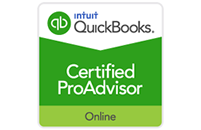As a small business owner, supplying your employees with benefits like sick leave is probably on your to-do list. It’s just managing the balance between paid time off, your workload, and the company finances. As of February 11th, 2018, though, this topic became a little more pressing. Business are now required to provide leave (either paid or unpaid) to their staff for sickness or safety reasons. If you haven’t started incorporating these benefits yet, here’s what you need to know.
It affects small businesses of varying sizes.
Mandatory sick laws have been in place for years when it comes to large employers—those with 50 full-time equivalent employees or more. However, this is a progressive step for small businesses of any size. Before, if you only had a handful of helpers, how you handled time off was really up you. Sure, it would be nice to provide paid leave to your full-timers, but if you couldn’t afford it, then you couldn’t afford it. Now, however, the Maryland Healthy Working Families Act requires companies with 15 people or more on staff to offer “sick and safe leave” with compensation. Even those with 14 or fewer employees are still liable when it comes to making leave available, but it doesn’t necessarily have to be paid. So, how do you determine how much to give?
Sick and safe leave must accrue.
This allows employees to “earn” their leave—one hour for every 30 that they work. Technically, this accrual began on February 11thfor all employees you had at that time. New hires start to accumulate hours immediately, effective their date of hire. So, if you haven’t started implementing these changes yet, you’ll have to backdate your calculations a bit.
Still, legislation did put limits in place. After 40 hours of accrued leave (within one year), you don’t have to offer anything additional in the way of time off. As for carrying these hours over from one year to the next, 64 hours is the maximum accrual any one employee can keep (altogether). So, this operates on a use-it-or-lose-it basis, with stipulations on how this leave can be used—although not when.
Employees can only use this leave for qualified reasons.
Keep in mind, this is a mandatory sick leavepolicy, not a paid time off, or vacation mandate. In order to use what they’ve accrued, your staff should give notice (whenever possible) of upcoming medical care for themselves or their family. While they don’t have to go into great detail about their diagnosis and/or treatment, they may be asked to provide a doctor’s note or other form of verification if there’s any doubt to the validity of their claim.
Checkups and other preventative care are also grounds for this sick leave, whether they’re for you, your spouse, your children, your parents, your grandparents or even your sibling(s). The law doesn’t provide the same protection for extended family, though, like aunts, uncles, or cousins. As an added measure, this act also covers mental health matters, maternity/paternity leave, and other extenuating circumstances—hence the inclusion of the term “safe leave.” If you have an issue with domestic abuse, sexual assault, and/or stalking, this provision allows you to use your leave for any of these situations, too. Just make sure you, as the employer, provide a written notice of these policies, along with the employees’ earned leave, on a regular basis to stay in compliance.
Realistically, the Maryland Healthy Working Families Act was put in place to protect the people within our community. We all know emergencies pop up, and the last thing you want to worry about in the middle of one of them is your job. So, be sure to let your employees know how their sick/safe leave benefits have changed in the last year. Avoid penalizing them in any way to exercising these new rights, and—if you follow these new rules and regulations—you’ll be protected from any employee complaints, as well. At ENSO Accounting, we’re happy to keep you updated on all the latest changes. But, if you need more information, you can visit Maryland’s Department of Labor, Licensing, and Regulation website.




